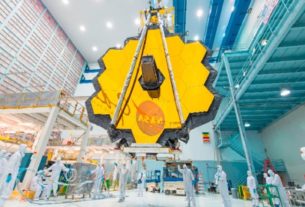On August 26, 2023, it will be an important date in astronomy, as it is the day that the X-Ray Imaging and Spectroscopy Mission (XRISM) is set to begin its mission. The mission is ambitious and aims to detect the most intense phenomena and objects within the universe, showing the development of the universe as well as the structure of time and space.
XRISM is a collaborative effort with scientists from the Japan Aerospace Exploration Agency (JAXA), NASA, and the European Space Agency (ESA), who are both heavily involved in this project. In the course of this cooperation, ESA will receive 8 percent of the time on XRISM as a payment for technical and scientific assistance. This will permit European scientists to develop celestial sources that can be observed by X-rays and to advance in the field of astronomy.
“X-ray astronomy” allows us to examine the most intense phenomena that occur in the universe. It’s crucial to answer crucial questions in contemporary astrophysics, such as how the biggest structures in the universe changed, how the stuff that we’re made up of was dispersed throughout the universe, and the way galaxies are formed by enormous black holes within their orbits. Centers,” says Matteo Guainazzi, XRISM project scientist at ESA.
“XRISM is a great connection between two other ESA space X-ray missions: XMM Newton and XMM-Newton, both of which are still in operation after 24 years in space, and Athena, which is scheduled to start in the later 2030s.”
The hot and dynamic universe
While when we glance at the sky, we are able to see galaxies and stars, this type of observation provides very little insight into the functioning of the universe. What isn’t visible to viewers is the emitting X-ray gas within galaxies and between stars, which could reveal a lot more to us.
In the X-ray zone, X-rays emit in the most intense explosions and also within the most sweltering regions of the universe. This is the case with superhot gas, which is the most massive component of the universe, which is galaxy clusters. JAXA is developing XRISM to measure the X-ray light emitted by the gas. This helps astronomers estimate the mass of all these structures and provide information about their origins and development in the universe.
XRISM images of galaxies could reveal the ways in which the universe generated and distributed chemical elements. The hot gas found in the clusters is a relic that was created by the birth or death of stars through the evolution of the universe. Through studying the X-rays produced by the gas, XRISM will reveal the nature of “metals” (elements larger than helium and hydrogen) and the way the universe was enriched by them.
While at it, XRISM will get closer to the X-ray-emitting objects that are on their own for a deeper dive into the fundamentals of physics. The mission will be able to measure the intensity of X-rays from extremely intense objects, like the supermassive black hole that is active and located in the centers of galaxies. This will allow us to better determine how these objects alter space-time and the extent to which they impact the galaxy they reside in via winds,” composed of particles that are ejected in a manner similar to that of light.
European contributions to an international effort
“ESA as well as the European community share a long history of collaboration with JAXA’s energy-efficient space telescopes,” Matteo explains. Matteo. “Continuing the collaboration via XRISM will be extremely beneficial for both agencies in space.”
The high-energy community of Europe has a high level of expertise. The members of the community have participated in the definition of the scientific goals of XRISM and were assigned by JAXA to select a number among the “test” cosmic objects to be observed by the mission in order to observe their performances before the test program starts. Science observation.
As well as this academic work, JAXA has entrusted Europe with the supply of several hardware elements that are essential for the successful mission. ESA provides a tested space optical telescope that will ensure XRISM will always know which direction it’s in, as well as two gadgets that can determine the magnetic field of Earth and guide the spacecraft in line with it.
Europa contributes to the Resolve instrument of XRISM, which will determine the amount of energy of photons incoming from X-rays. It will enable astronomers to determine the motion and temperature of the X-ray-emitting gas with unparalleled precision. Resolve is both a scientific and technology-based precursor to ESA’s planned Athena mission, which is expected to be a similar instrument.
The Resolve detector’s temperature remains cool; less than a fraction of a degree below absolute zero is essential; European industry provided the loop heat pipes that can handle this crucial mission. SRON, located in the Netherlands, supplied the instrument’s six-position filter wheel. Each filter could be used in the instrument for various purposes. The University of Geneva in Switzerland created the electronic components that control the wheel for filtering.




